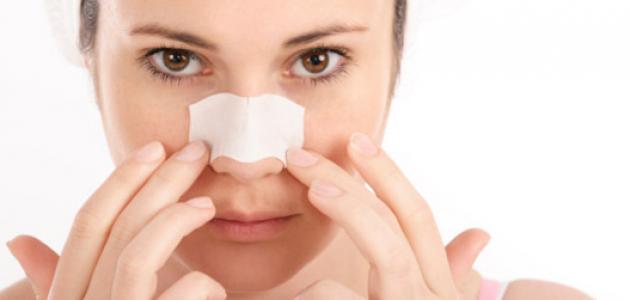Contents
Exercise
According to the World Health Organization (WHO), physical activity is defined as any physical movement produced by skeletal muscles that requires energy consumption, while exercise is defined as a sub-category of physical activity; So that it is frequent, organized, and planned with the aim of enhancing physical fitness, and the World Health Organization has considered inactivity to be the fourth major risk factor for global deaths, and is considered a major cause of about 21-25% of colon and breast cancer cases , and 27 % Of cases of diabetes , and about 30% of cases of coronary heart disease. [1]
Benefits of exercise
Exercise has many benefits that cannot be ignored. They benefit everyone, regardless of their age, gender, or even their physical abilities, and in the following we mention some of its benefits: [2] [3]
- Bone and Muscle Health: Exercise helps build muscle; This is due to its ability to stimulate the secretion of hormones that help muscles absorb amino acids. This contributes to muscle growth and reduces muscle losses resulting from aging, in addition to helping to increase bone density in childhood, and prevent osteoporosis in later life stages.
- Weight loss: The practice of aerobic exercise is very important to lose weight the right way, where the practice of sport is working to increase the speed of operations rate of metabolism in the body; This leads to an increase in calorie burning on a daily basis, preservation of muscle mass, and weight loss at the same time.
- Prevention of chronic diseases: Exercise helps improve cardiovascular health, increase the body’s sensitivity to insulin, and helps lower blood pressure and reduce levels of fats in the blood. One study indicates that exercise is important for people with coronary heart disease in rehabilitation. Cardiovascular exercise for them, whether that sport is by performing aerobic exercise or resistance exercise . Sport also helps to secondary prevention and continuous improvement in patients living with the disease, and in contrast, not exercising for short periods leads to accumulation Significant abdominal fat; Hence, a higher risk of developing type 2 diabetes, heart disease , and early death. [3] [4]
- Memory and brain health: Exercising regularly helps improve brain function, protect memory, in addition to improving thinking skills, through:
- Increased heart rate; Thus increasing the flow of blood and oxygen to the brain.
- Stimulating the production of specific hormones that help boost brain cell growth.
- Prevention of chronic diseases that affect brain function.
- Increase the size of the hippocampus ; It is a vital part of the brain responsible for memory and learning.
- Reducing changes in the brain. As a result of Alzheimer's disease or schizophrenia.
- Control of pain: exercise has positive effects on various conditions. They help increase pain tolerance, as well as alleviate it in some cases.
- Sleep and relaxation: Exercising regularly, regardless of its quality; Whether it is aerobic exercise, resistance training or a combination of both, it will help you sleep better, as well as help you feel energized during the day.
- Skin health: Exercising regularly helps increase blood flow, and increases the body's production of natural antioxidants; Which protects the skin cells from the effects of aging.
- Feeling happy: Exercising regularly helps improve mood, reduce feelings of anxiety and depression ; And that by increasing the sensitivity of the brain to the hormones serotonin and noradrenaline , in addition to increasing the production of the hormone endorphins ; Which helps produce positive emotions and reduce pain.
- Increase sex drive: Exercise helps enhance performance and sexual desire in men and women, in addition to reducing the risk of erectile dysfunction (erectile dysfunction) in men.
Types of exercise
There are many exercises that a person can do, and here are the four most important types of these exercises: [5]
- Aerobic exercises: These are exercises that increase the heart rate and breathing, which are very important for many body functions.
- Balance exercises: These exercises help improve balance and reduce falls, and these exercises are especially important when aging.
- Stretching exercises: Doing regular stretching exercises lengthens the muscles and makes them more flexible; This increases the range of motion, reduces injuries and pain.
- Resistance exercises: These exercises help to strengthen muscles, promote bone growth, in addition to reducing blood sugar, controlling weight, and also helping to promote balance, and relieve stress and lower back and joint pain.
Global recommendations for exercising
Age group from 5-17 years
It is recommended for this age group to get at least 60 minutes a day of moderate to vigorous intensity exercise; Physical activities for this category include games, play, and exercises planned by the family or school, and it is recommended that the largest share of exercises be aerobic exercises, in addition to engaging in high-intensity physical activities at least three times a week. This is to strengthen bones and build muscles. (WHO): [6]
The age group is from 18-64 years
According to the World Health Organization, it is recommended for this age group to engage in at least 150 minutes of moderate-intensity aerobic physical activity distributed throughout the week, or at least 75 minutes of high-intensity physical activity distributed throughout the week, or a combination of moderate-intensity and high-intensity physical activity Physical activities for adults of this age group include recreational or leisure physical activities, walking or cycling, professional activities, or household chores. It is also recommended that resistance activities that include the main muscle groups should be practiced, in addition to increasing the period of activity Moderate-intensity aerobic physical activity to 300 minutes per week, 150 minutes of high-intensity aerobic physical activity each week, or a combination of moderate-intensity and high-intensity physical activity; To reap more health benefits from exercise. [6]
Age group 65 years and over
There are several recommendations for optimal exercise. In order to improve cardiorespiratory and muscular fitness, bone health, and reduce the risk of noncommunicable diseases, depression, and cognitive decline, among these recommendations we mention the following: [6]
- Do more than 150 minutes of moderate-intensity physical activity distributed throughout the week or 75 minutes of vigorous physical activity distributed throughout the week, or a combination of moderate-intensity and high-intensity physical activity.
- Doing aerobic exercises in stages, provided that the duration of each is at least 10 minutes.
- Do physical activity at least 3 times a week; To promote balance and prevent falls.
- Do resistance activities that involve major muscle groups two or more days a week.
- Engaging in physical activities that suit their abilities and health.
References
- ↑ "Physical Activity" , www.who.int , Retrieved 25-12-2017. Edited.
- ↑ "Exercise: 7 benefits of regular physical activity" , www.mayoclinic.org , 13 October 2016 , Retrieved 25-12-2017. Edited.
- ^ A b "The . Top 10 Benefits Of Exercise BRK" , Www.healthline.com , 10-2-2017, Retrieved 25-12-2017. Edited.
- ↑ "Coronary heart disease - the benefits of exercise." , www.ncbi.nlm.nih.gov , 3-2010, Retrieved 25-12-2017. Edited.
- ↑ "The 4 most important types of exercise" , www.health.harvard.edu , Retrieved 25-12-2017. Edited.
- ^ A b v "Global recommendations on physical activity for health" , Www.who.int , Retrieved 25-12-2017. Edited.
















